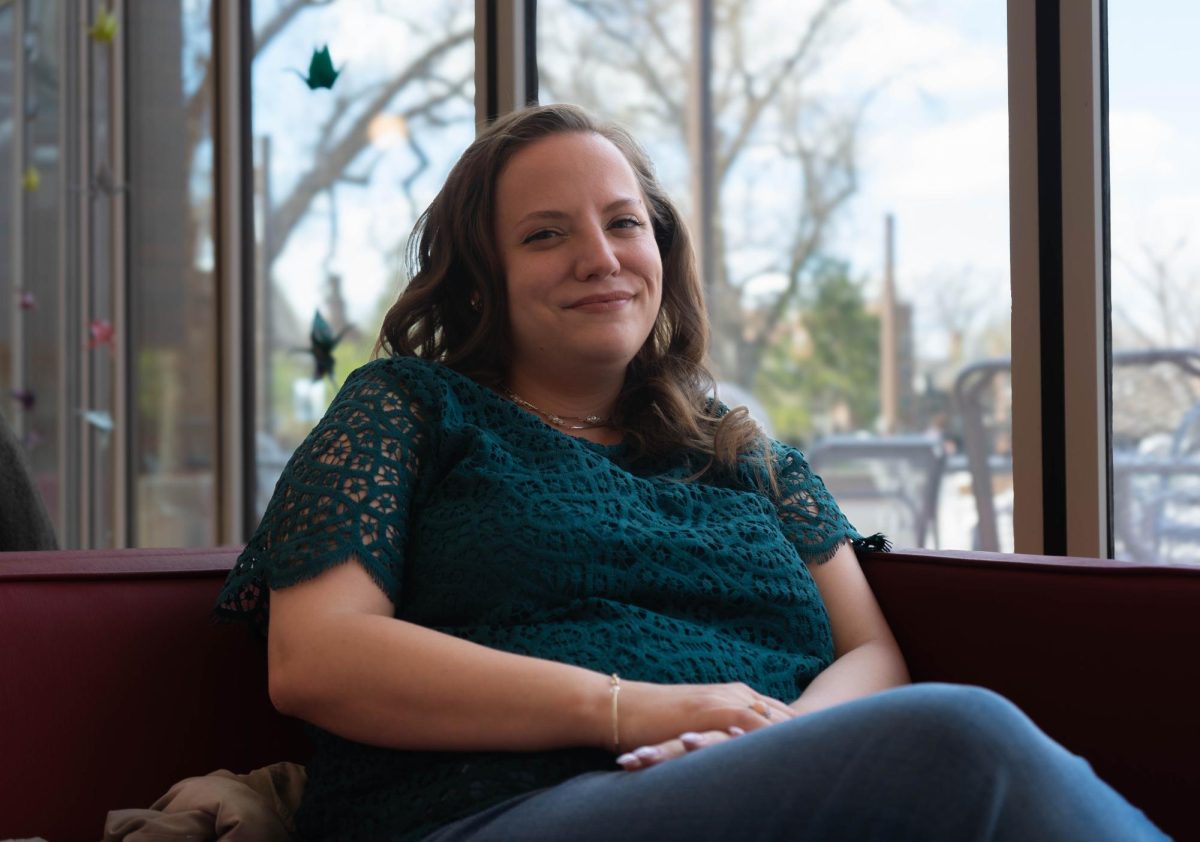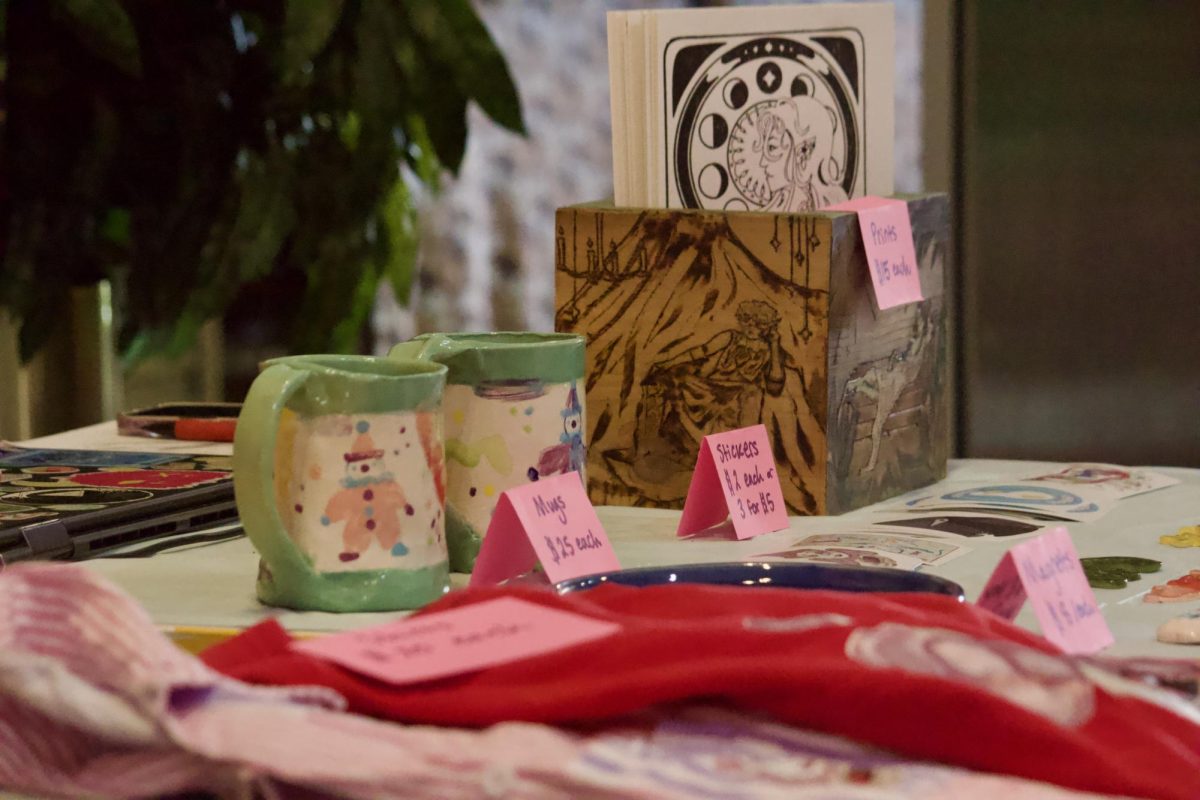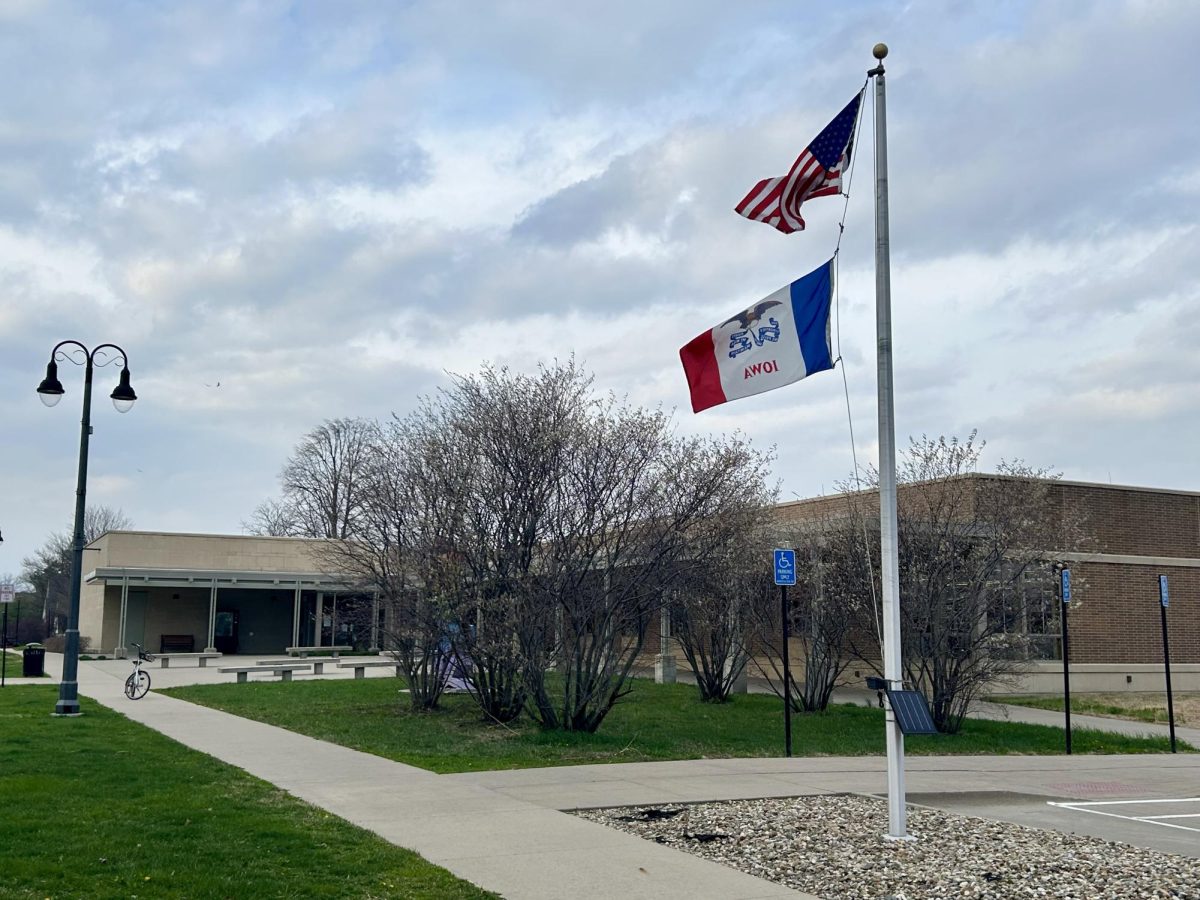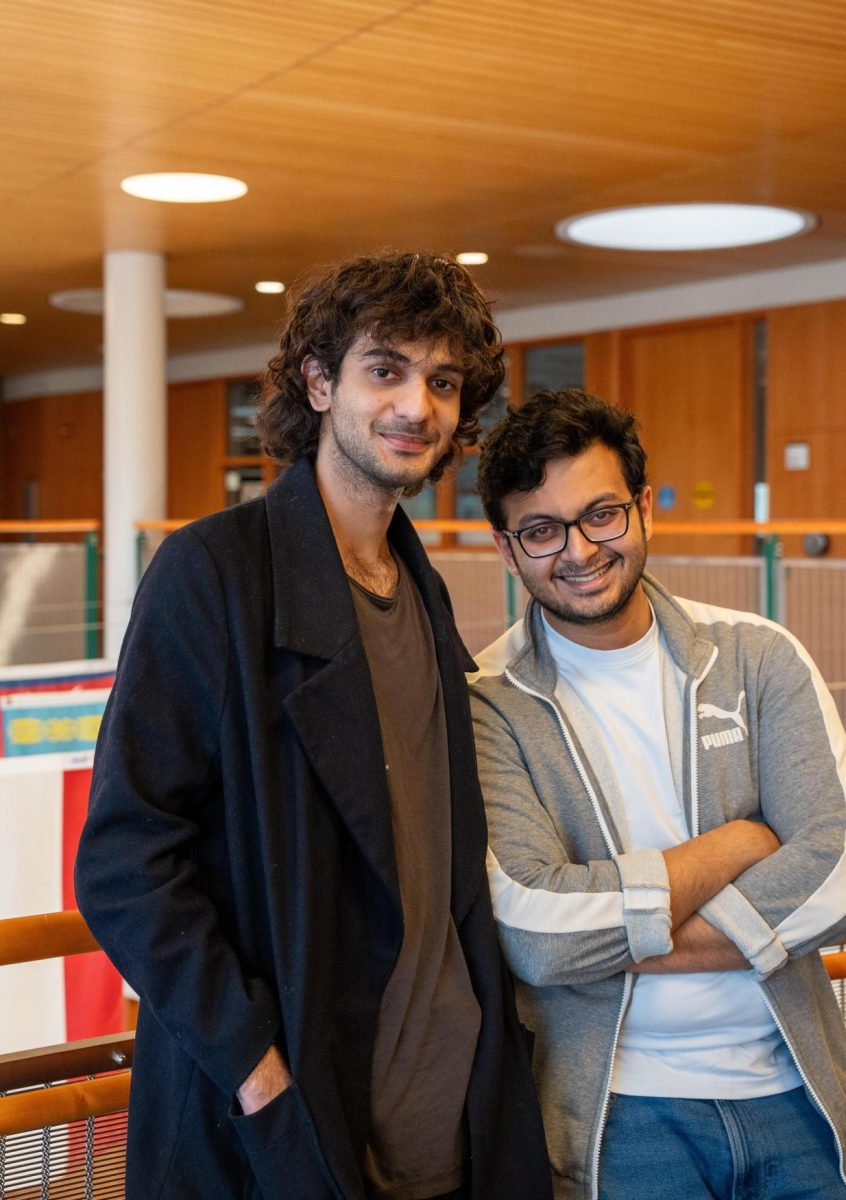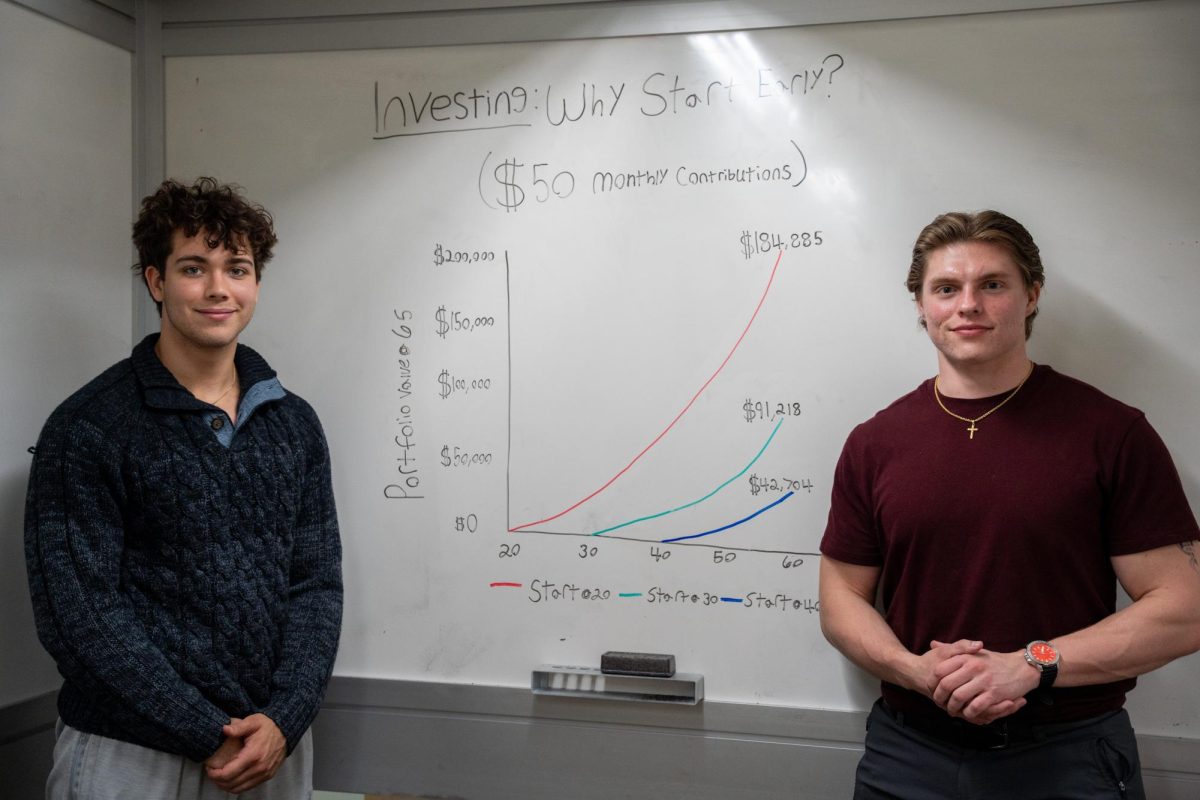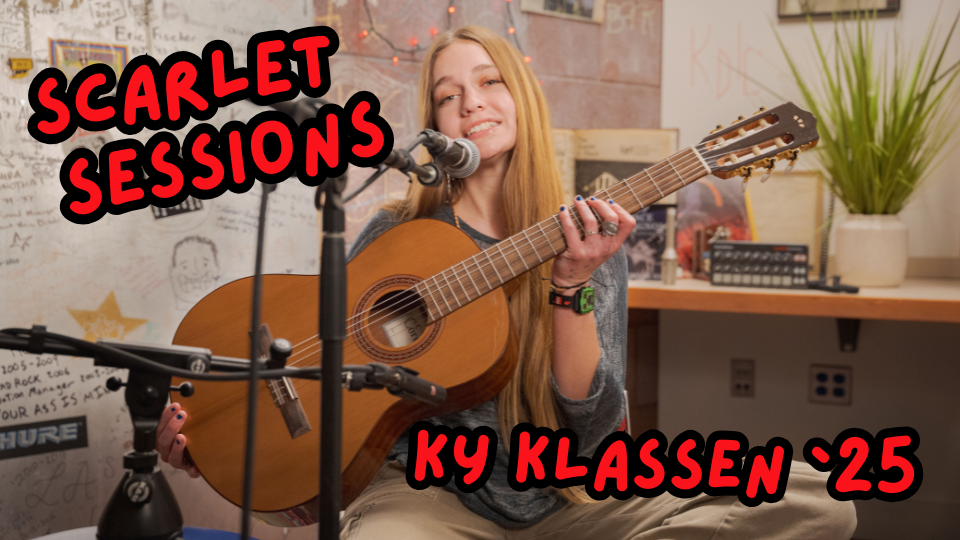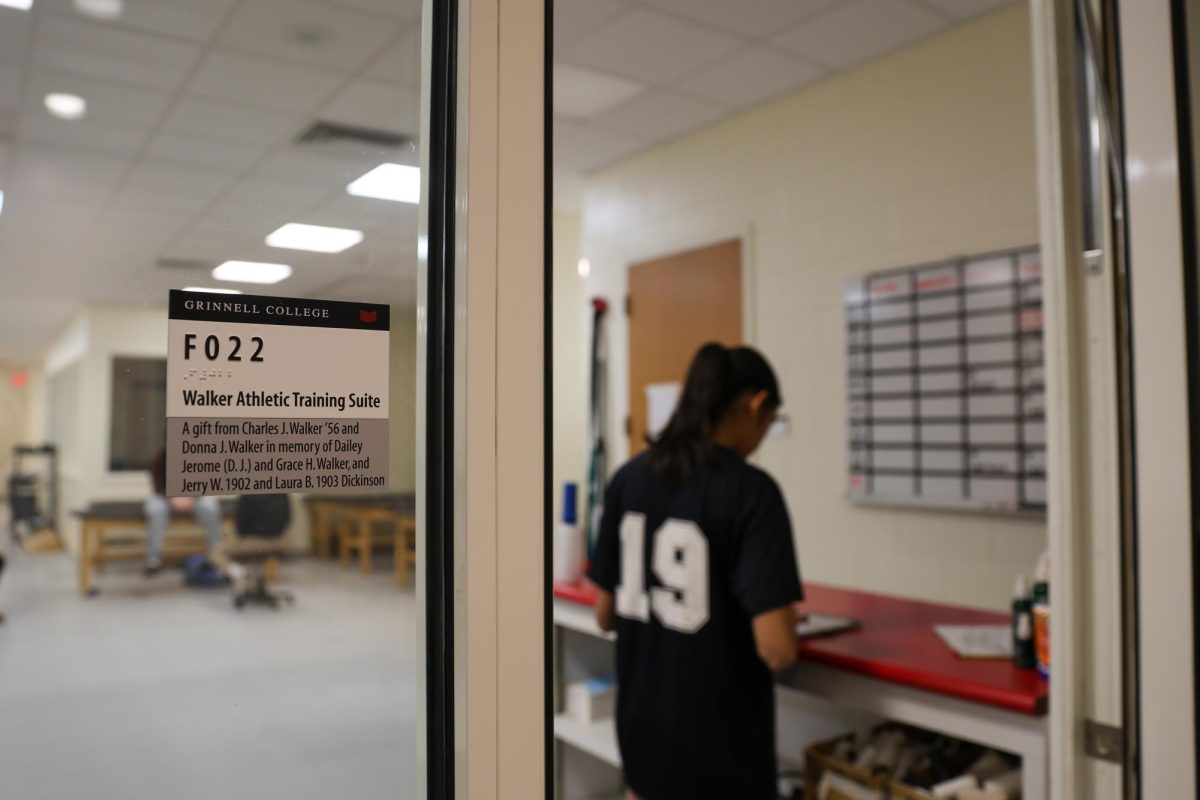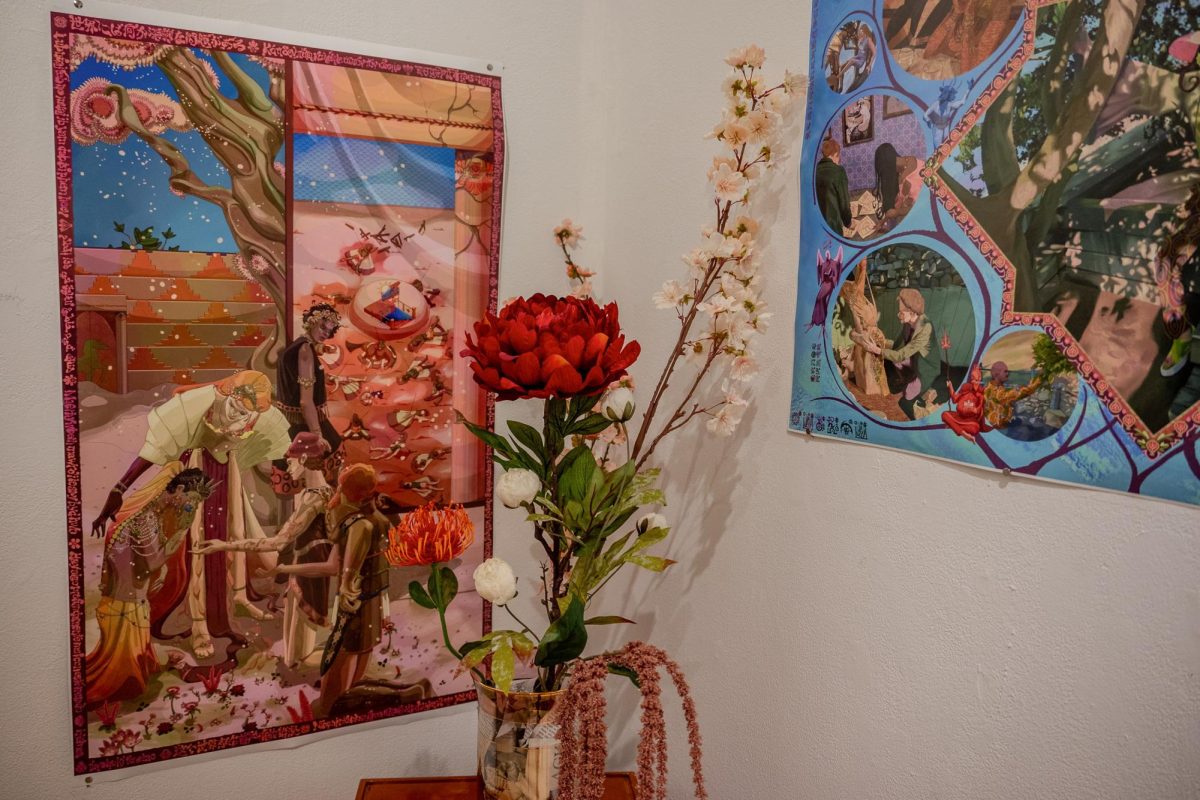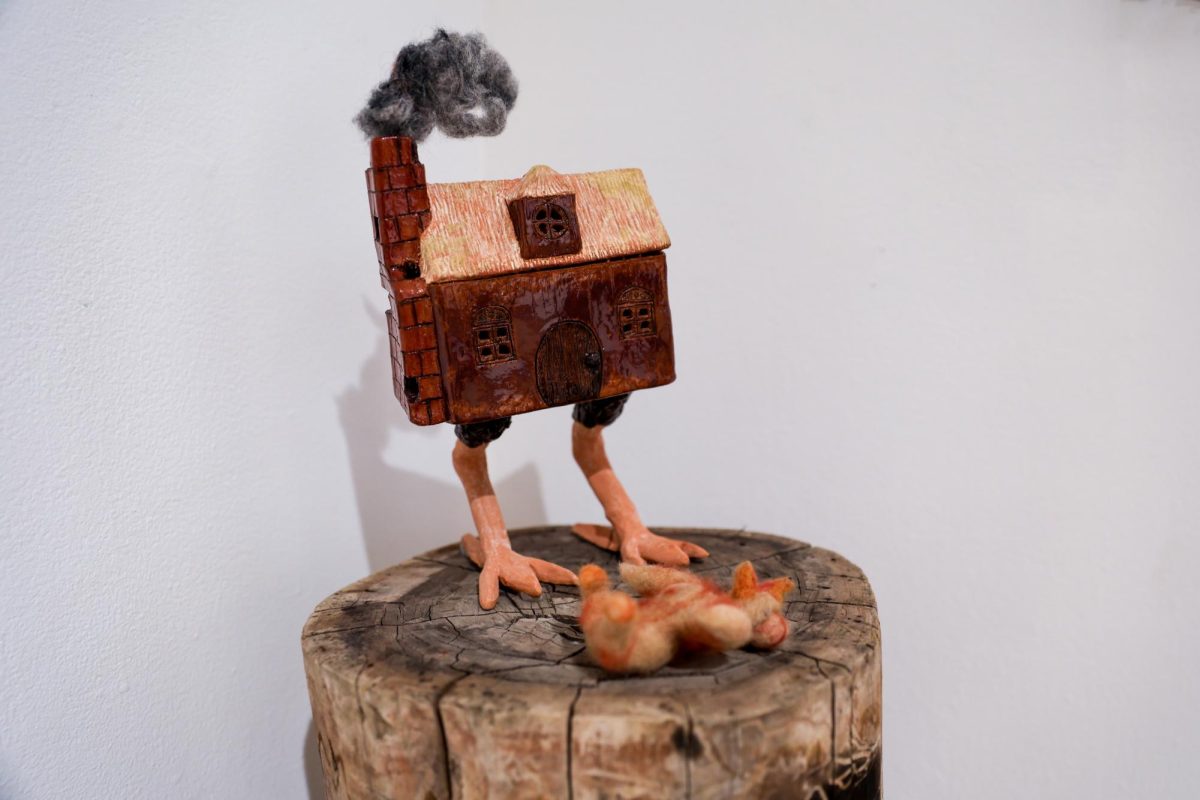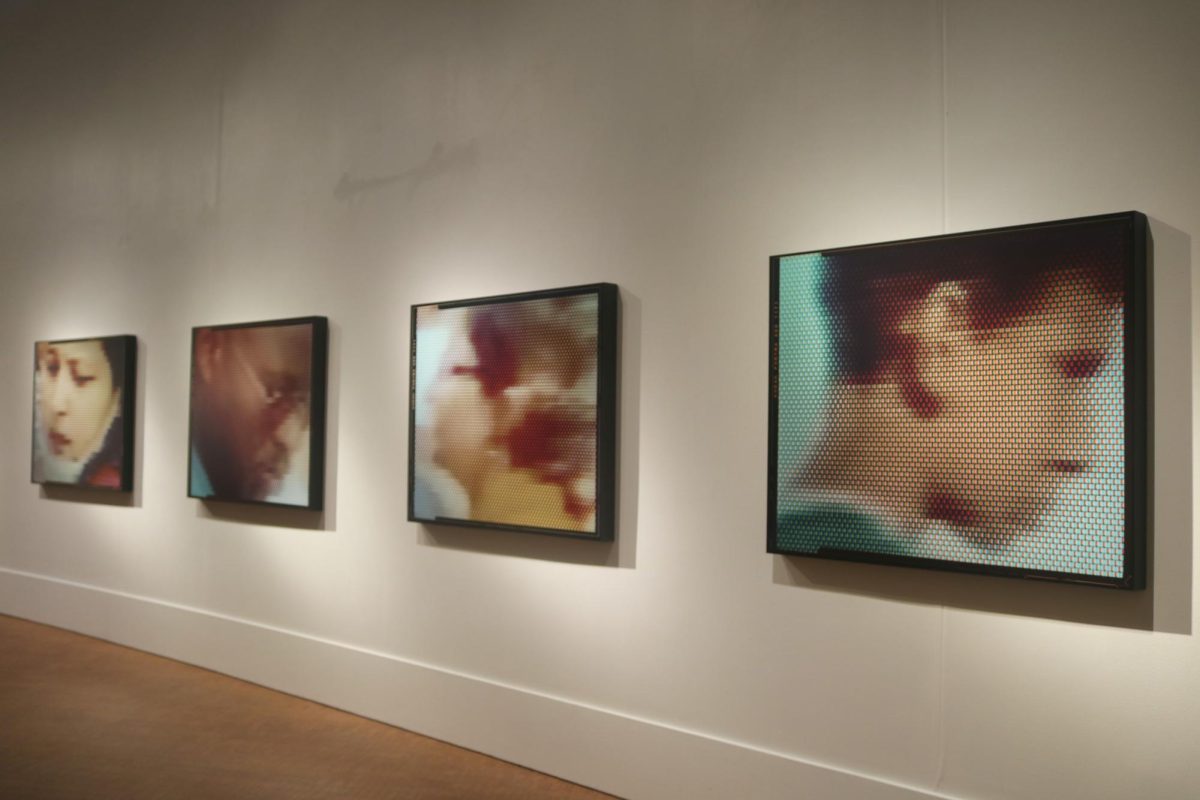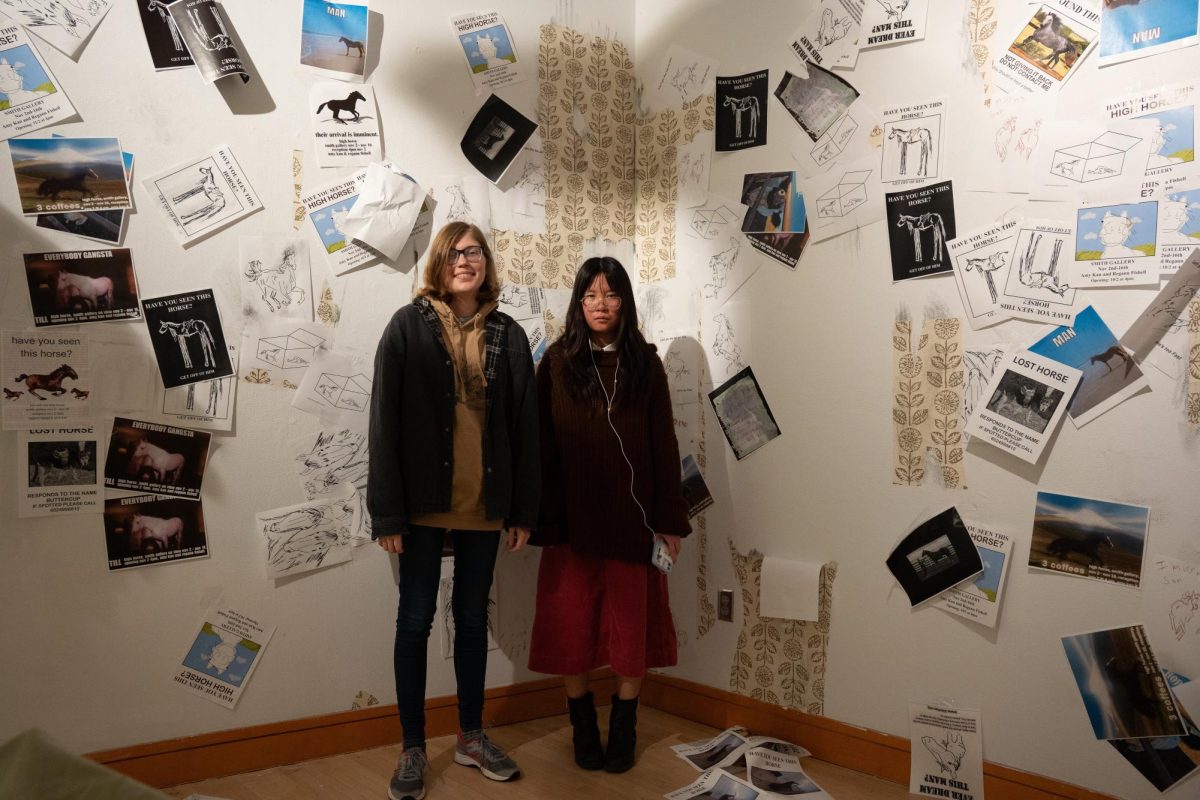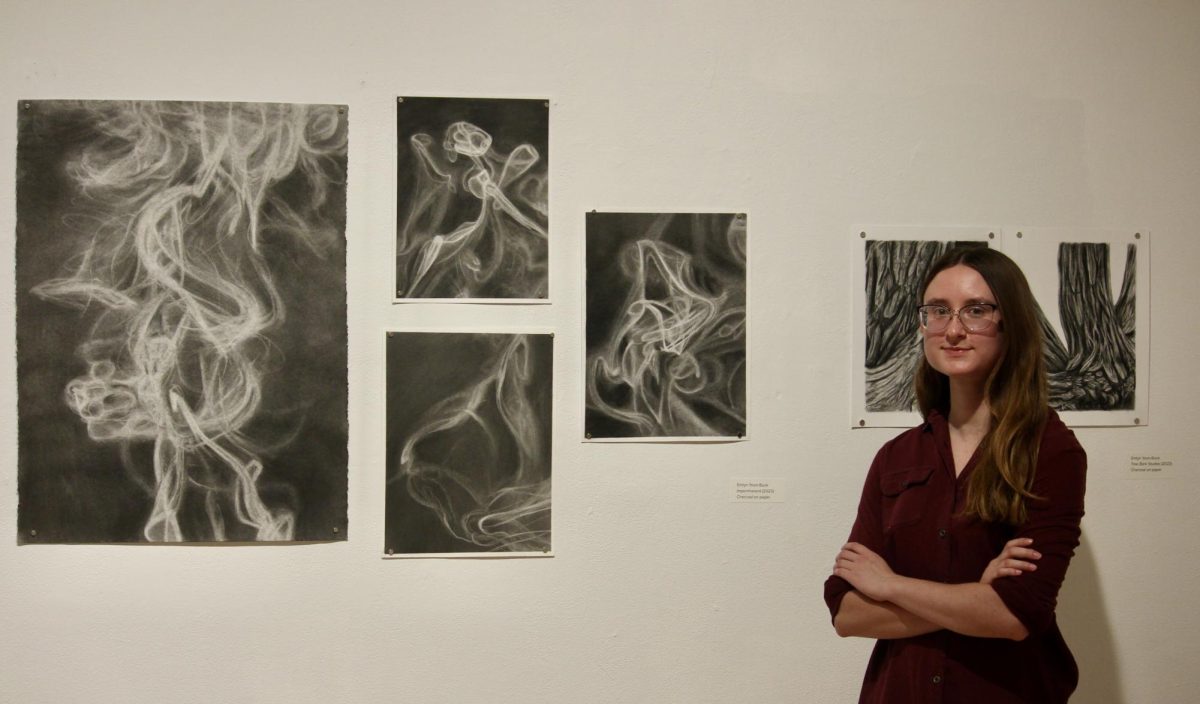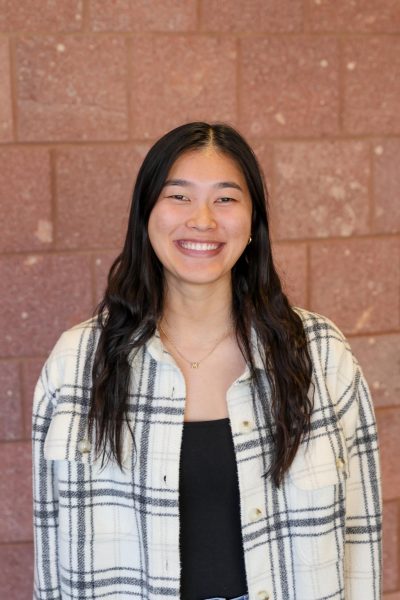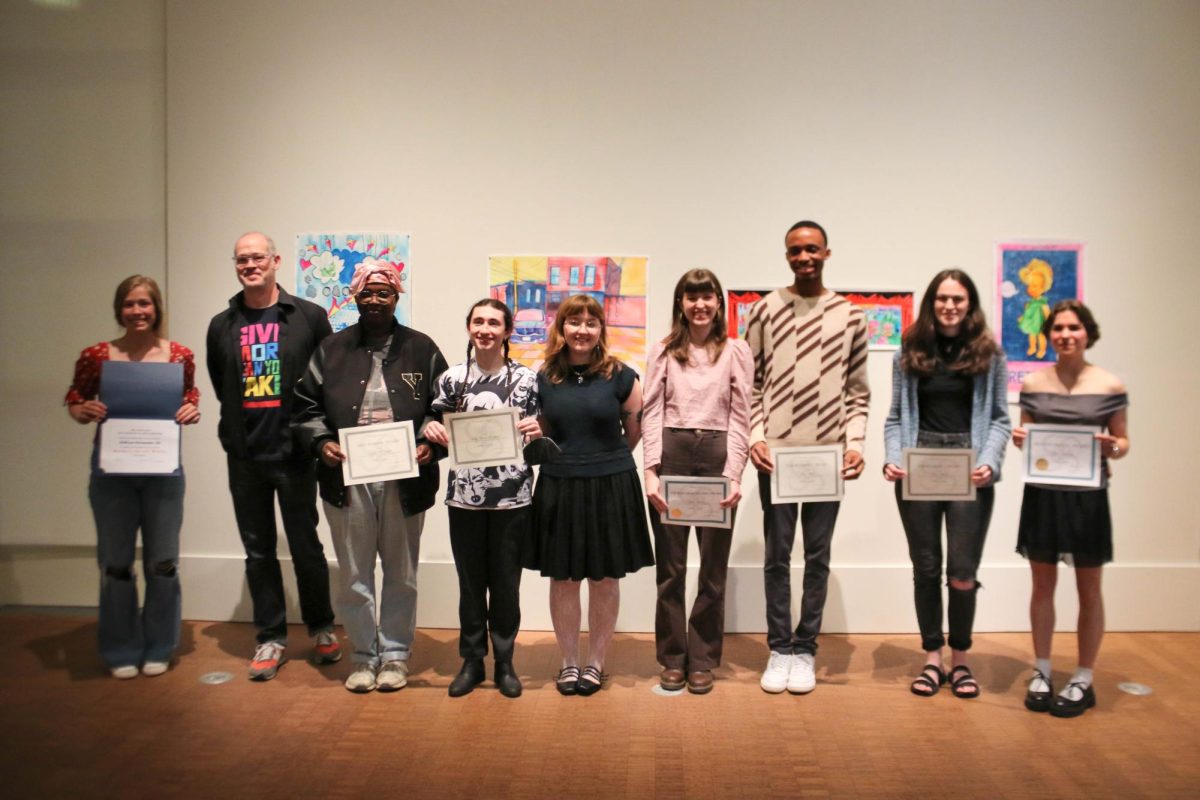
On Thursday, April 18, the Grinnell College Museum of Art opened the 2024 Bachelor of Arts Exhibition (BAX), an annual tradition that celebrates the creativity of studio art students in a culminating show of selected artworks. At the reception, classmates, faculty and museum staff viewed the artists’ pieces and attended an awards ceremony.
“This was really hard to judge,” said Luther Davis `93, a printmaking professor at Parsons School of Design and this year’s selected juror of the show. “There’s so much strong work here.”
While BAX has traditionally displayed works by third- and fourth-year studio art majors, this year, any studio art major who had taken at least three art classes or showed interest in the department could also submit, said Alina Ihnatesku `26 and Stella Lowery `24, studio art Student Educational Policy Committee (SEPC) members.
Milton Severe, director of exhibition design, said that this year’s show had been “beautifully curated” by the studio art SEPC.
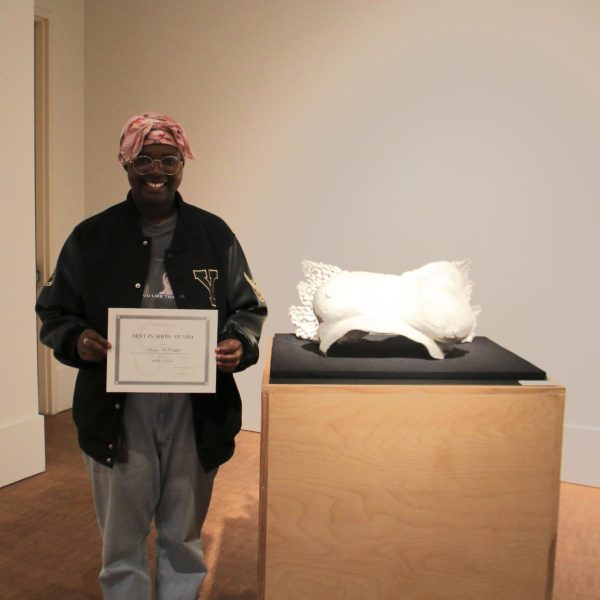
“There were a lot of artworks to review, but we started pretty early on with selecting the juror and coordinating with the museum about everything,” said Karis McCaskill `24. “It was a lot of work, but it all came out together really nicely.”
McCaskill won the Inez Louise Henley 1914 Best in Show Award for “Floating Dreams,” a ceramic sculpture of her chest that required her to plaster cast nude in the ceramic studio.
“I feel like I wanted to prove myself, that I do make art,” she said. “I was unsure if I was going to do art for a long time, but I knew it was where I had the most fun and where I like to put my energy.”
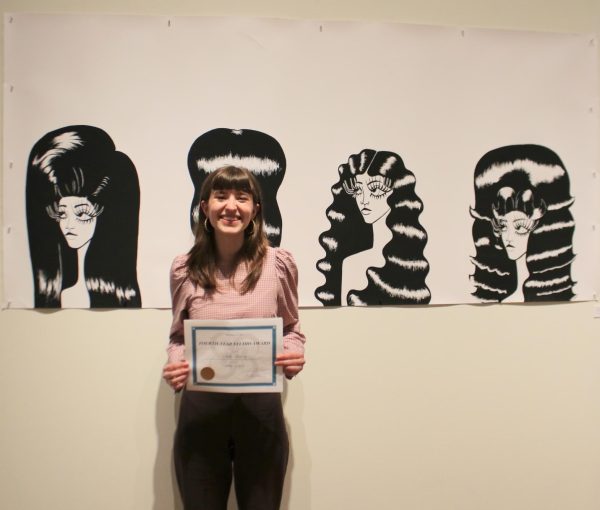
Lowery clinched two awards — the Fourth Year Studio Award for her portfolio and the Louise Glenn Zirkle Memorial Prize for Sculpture for her self-portrait “The Doll-Woman (An Object of Controversy),” a life-sized canvas doll.
As an artist, Lowery said she had grown to fine tune her practice. As someone who enjoys working with “campy imagery,” she said she now thinks about only including what elements her work truly needs so her message is not lost on audiences.
This year, numerous first- and second-year student works were selected, too. Ihnatesku’s video “Gridlock” won the first-ever Moving Image Award from the film and media studies department.
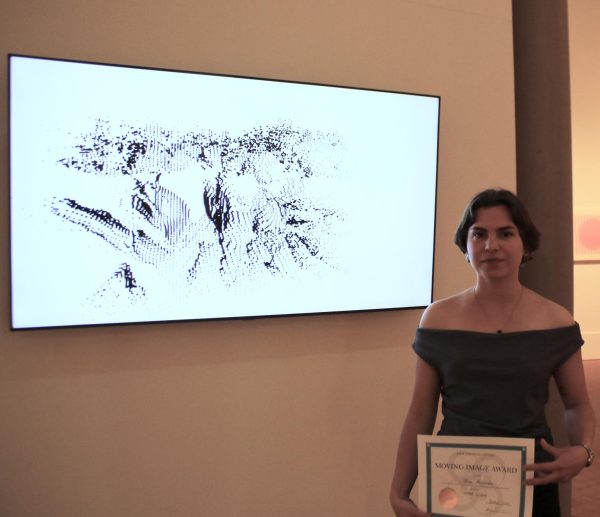
Ihnatesku’s piece, the only animated work on display, was mounted on a television screen. Developed on JavaScript through an independent study, Ihnatesku explained that it was a “creative coding” project where she explored grid systems, typography and three-dimensional images for the purposes of expression instead of function.
“I actually forgot that there was a Moving Image Award,” said Ihnatesku. “I was like, ‘Oh my goodness, who’s it going to be?’ I was really excited because I did not expect anything.”
Keisya Park `26, another declared major, had “Harmony of Imperfection” displayed, a sculpture consisting of wooden panels bound by criss-crossed string, on which she wrote personal essays in Korean script and added elements of nature made from gouache, sand paint and glass.
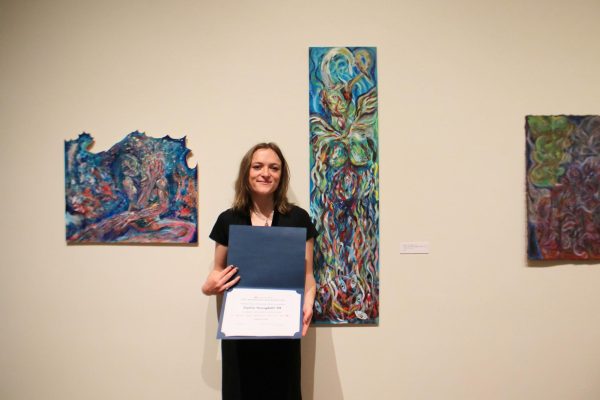
“I realized that my painting and my writing are really connected. It’s the way of expressing myself,” said Park. “I started to think about the concept of connection, that everything is connected.”
Sophie Youngdahl `24 is another student who explored the intertwinings of emotion and experience through the waves and clutter of their oil pastel paintings. Youngdahl said that their pieces often begin with an archetypal form and “a feeling that I don’t really know how to express,” before taking on its own direction in terms of color. Their piece, “I Have Two Swans Inside of Me,” won the Student Government Association Award.
For Davis and Severe, opportunities like these are important in the development of a student’s relationship with their art. Severe said that it taught students how to work with museum staff and think about their works in the context of an exhibition space.
“One of the main ways of seeing your work is through the eyes of other people engaging in and creating a dialogue with it,” added Davis. “It’s also much different seeing your work on a gallery wall than on your dorm room floor.”
For Youngdahl, their art practice, which was initially very career-driven, has simply evolved into a “lifestyle” they now “cannot function without.” They said it was an “honor” to be able to display their art for others.
“Seeing our works put up with such care by Milton — to witness people look at your art and know that they’re having a reaction to it,” they said. “It’s honestly the coolest thing in the world.”




